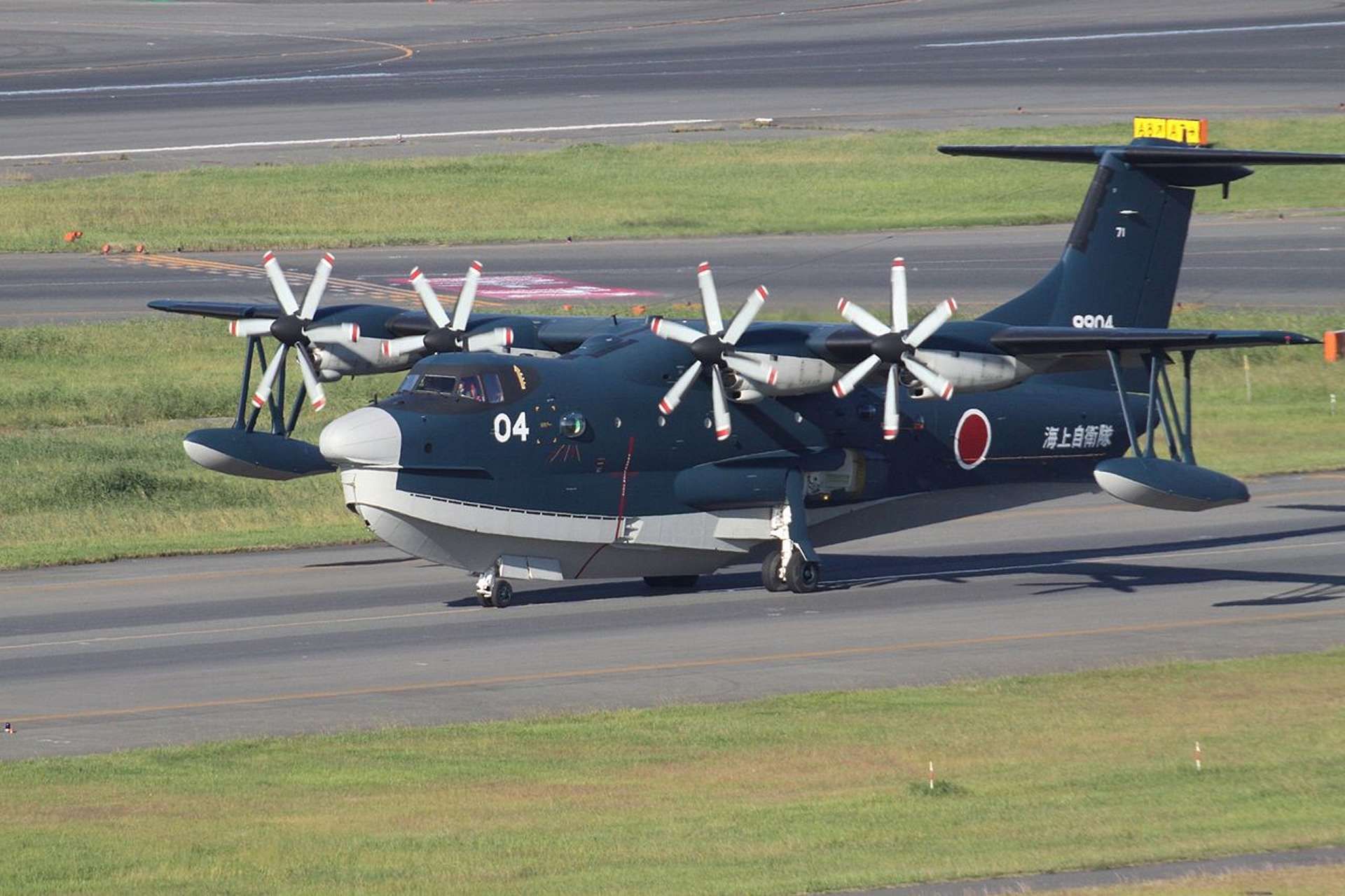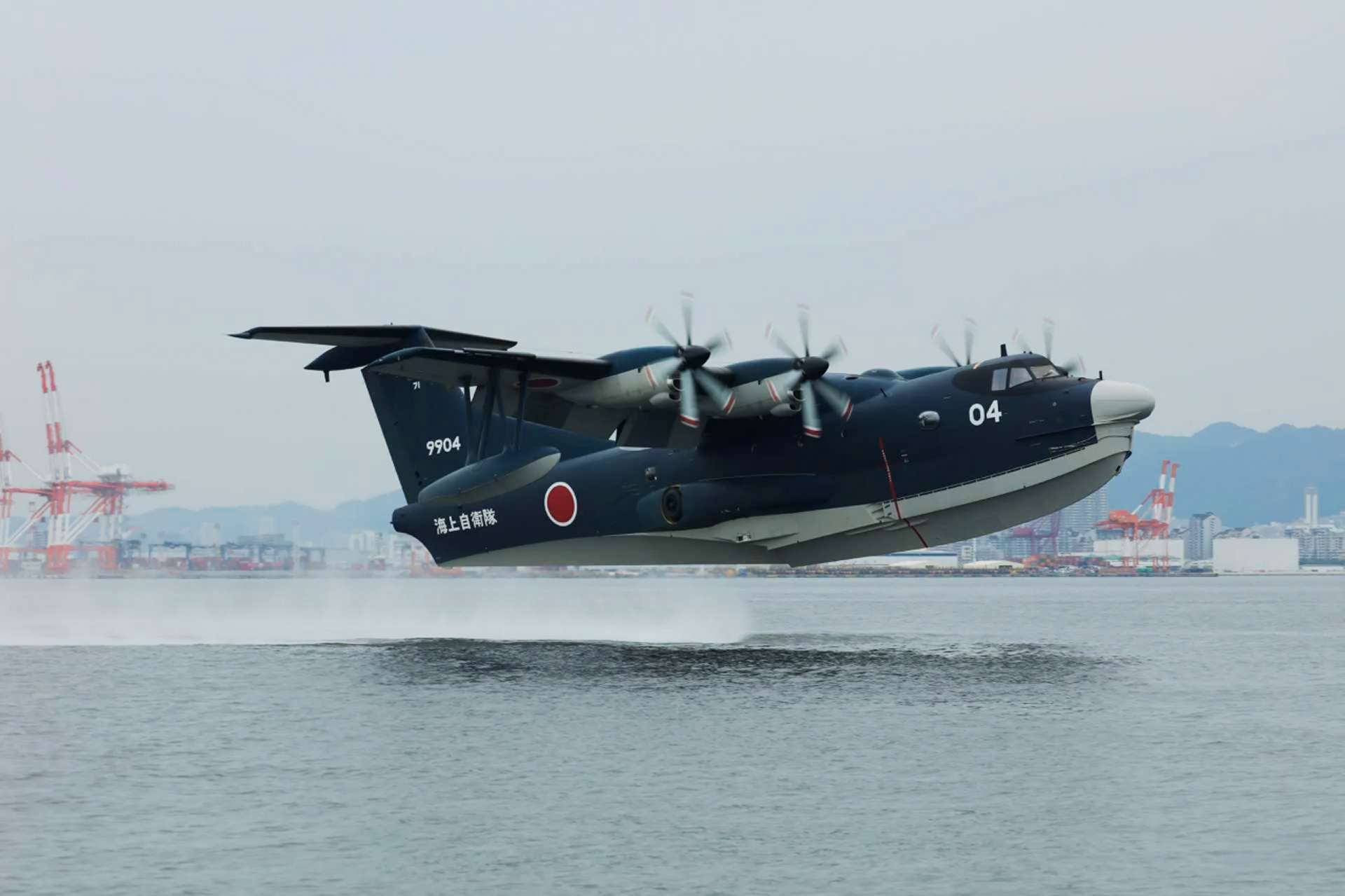Breaking News
Japanese Navy welcomes back ShinMaywa US-2 amphibious aircraft for maritime rescue missions.
On July 8, 2024, the Japanese Kinki Chubu Defense Bureau announced that the ShinMaywa US-2 short takeoff and landing (STOL) amphibious aircraft, tail number 9904, had completed routine repairs by the end of June 2024 and was subsequently returned to the Japan Maritime Self-Defense Force (JMSDF), also known as the Japanese Navy. This aircraft, which operates out of the Iwakuni Air Base located in Iwakuni at the southern end of Japan’s Honshu island, is scheduled to participate in maritime rescue missions.
Follow Army Recognition on Google News at this link

The ShinMaywa US-2 short takeoff and landing (STOL) amphibious aircraft, tail number 9904, which operates out of the Iwakuni Air Base located in Iwakuni at the southern end of Japan’s Honshu island, is scheduled to participate in maritime rescue missions. (Picture source: Kinki Chubu Defense Bureau)
The ShinMaywa US-2 is a Japanese STOL amphibious aircraft designed for air-sea rescue missions. Developed by ShinMaywa, it is an evolution of the Shin Meiwa US-1A, incorporating technological advancements to improve performance and capabilities. The aircraft's first flight occurred on December 18, 2003, and it was officially introduced into service on March 30, 2007. The JMSDF is its primary operator, with the aircraft still in production.
The US-2 was developed to replace the aging US-1A fleet of the JMSDF. It features several enhancements over its predecessor, including more powerful Rolls-Royce AE 2100 engines, a pressurized hull, and updated electronic cockpit instrumentation. These improvements enhance handling during water landings, patient transfer capabilities, and overall search-and-rescue (SAR) performance. The aircraft employs boundary layer control technology for improved STOL performance and stall suppression.
Manufactured with contributions from multiple Japanese companies, the production of the US-2 involves Mitsubishi Heavy Industries, Kawasaki Heavy Industries, and NIPPI Corporation. Mitsubishi produces the outer wings and rear engine nacelles, Kawasaki builds the cockpit, and NIPPI handles the watertight landing gear housings. Final assembly takes place at ShinMaywa’s facility, with production capacity limited to two aircraft at a time, reflecting the specialized nature of its construction.
The JMSDF operates the US-2 from Iwakuni Air Base and Atsugi Air Base, with plans to procure up to 14 units. The aircraft’s introduction allowed for the retirement of the US-1A fleet, with the last US-1A completing its final flight in December 2017. The US-2 has participated in notable missions, including a significant rescue operation in 2013 that saved two sailors adrift in the Pacific Ocean.

Powered by four Rolls-Royce AE 2100J turboprop engines, each providing 3,424 kW (4,592 hp), the US-2 needing only 280 meters for takeoff and 330 meters for landing on water. (Picture source: Wikimedia)
Export opportunities for the US-2 have been explored, with several countries expressing interest. The Indian Navy and Indian Coast Guard have shown considerable interest, with ongoing negotiations for the potential acquisition of 12 to 18 aircraft. Indonesia, concerned about regional security, is another prospective customer, and discussions have also taken place with Thailand and Greece, the latter considering the US-2 for firefighting roles.
The US-2 is powered by four Rolls-Royce AE 2100J turboprop engines, each providing 3,424 kW (4,592 hp), and a LHTEC T800 turboshaft engine for boundary layer control, enhancing its STOL capabilities. The aircraft has a maximum speed of 560 km/h and a cruise speed of 480 km/h. It has a range of 4,700 km and a service ceiling of 7,195 meters (23,606 ft). Its takeoff distance on water is 280 meters (920 ft), and it can land on water within 330 meters. The US-2's avionics and fly-by-wire control system contribute to its performance and reliability in demanding environments.
In comparison to other amphibious aircraft designed for roles such as search and rescue, firefighting, and maritime patrol, the US-2 has a length of 33.3 meters and a wingspan of 33.2 meters, while the Canadian Canadair CL-415 is more compact, with a 19.8-meter length and 28.6-meter wingspan. The Chinese AVIC AG-600, the largest in overall dimensions, has a length ranging from 36.9 to 37 meters and a wingspan of 38.8 meters. The Russian Beriev Be-200 has a length of 31.4 meters and a wingspan of 32.8 meters. Regarding height, the AG-600 is the tallest at 12.1 meters, while the US-2 stands at 10.06 meters, and both the CL-415 and Be-200 are 8.9 meters tall.
In terms of performance, the US-2 has a cruising range of over 4,700 km, higher than the CL-415’s 2,426 km and the Be-200’s 3,300 km, and close to the AG-600’s 4,500 km. The US-2 also requires shorter distances for takeoff and landing on water, needing only 280 meters for takeoff and 330 meters for landing. Its ability to land on water with wave heights up to 3 meters is higher than the CL-415’s 1.8 meters and the Be-200’s 1.2 meters, and comparable to the AG-600’s range of 2 to 2.8 meters. Additionally, the US-2’s crew capacity is larger, accommodating 11 personnel, whereas the CL-415 can carry 2-9, the AG-600 3, and the Be-200 2.

The US-2's ability to land on water with wave heights up to 3 meters is higher than the Canadian CL-415’s 1.8 meters and the Russian Be-200’s 1.2 meters, and comparable to the Chinese AG-600’s range of 2 to 2.8 meters. (Picture source: Kinki Chubu Defense Bureau)


























